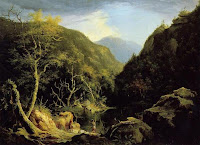 The Metropolitan Museum of Art Archives has announced that three recently processed collections relating to the institution are now open for scholarly research. The papers of Met founder John Taylor Johnston, New York art collectors Louisine Waldron Elder and Henry (Harry) Osborne Havemeyer, and long time Met staff member Richard F. Bach have all been made available (with online finding aids).
The Metropolitan Museum of Art Archives has announced that three recently processed collections relating to the institution are now open for scholarly research. The papers of Met founder John Taylor Johnston, New York art collectors Louisine Waldron Elder and Henry (Harry) Osborne Havemeyer, and long time Met staff member Richard F. Bach have all been made available (with online finding aids).
John Taylor Johnston Collection, 1832-1981: John Taylor Johnston was a founder of The Metropolitan Museum of Art and was elected its first President in 1870. He held this position until he retired in 1889- the institution’s Trustees subsequently voted him Honorary President for Life. The collection consists of travel journals, visitor books, correspondence, family histories, and other unpublished and published documents relating to the life, travels and family history of John Taylor Johnston. The bulk of this material relates to Johnston’s personal affairs and is not concerned with The Metropolitan Museum of Art. Finding aid.
The Havemeyer Family Papers relating to Art Collecting, 1901-1922: The New York art collectors Louisine Waldron Elder (1855-1929) and Henry (Harry) Osborne Havemeyer (1847-1907) assembled a large and diverse collection of paintings, sculpture and decorative art between 1876 and 1924. It was known for being one of the first American art collections to include Spanish and Impressionist paintings. The papers include correspondence, writings, notes, and ephemera that document the Havemeyers’ art collecting activities between 1901 and 1922. The majority of the collection consists of correspondence with art dealers and agents, such as Mary Cassatt, Theodore Duret, Albert E. Harnisch and Ricardo de Madrazo, who worked on behalf of the Havemeyers to build their renowned art collection. Finding aid.
Richard F. Bach Records, 1913-1953: During his tenure at The Metropolitan Museum of Art, Richard F. Bach served as Associate in Industrial Arts (1918-1929), Director of Industrial Relations (1929-1941), Dean of Education and Extension (1941-1949), and Consultant in Industrial Arts (1949-1952). Bach championed the collaboration of museums and the industrial arts, working extensively with manufacturers, industrial designers, and educational institutions. In addition to his work at the Museum, Bach was a member and leader of a number of arts and education organizations as well as a prolific writer and lecturer. The Richard F. Bach Records primarily contain correspondence, meeting minutes, and pamphlets related to Bach’s activities as Director of Industrial Relations, Dean of Education and Extension, and Consultant in Industrial Arts. The majority of the correspondence is professional in nature and concerns Bach’s role as liaison between The Metropolitan Museum of Art and industrial designers, manufacturers, educators, and arts organizations. Finding aid.
The Metropolitan Museum of Art Archives The objective of The Metropolitan Museum of Art Archives is to collect, organize, and preserve in perpetuity the corporate records and official correspondence of the Museum, to make the collection accessible and provide research support, and to further an informed and enduring understanding of the Museum’s history. Archives holdings include Board of Trustees records, legal documents, Museum publications, office files of selected Museum staff, architectural drawings, press clippings, and ephemera. The Archives is accessible to Museum staff and to qualified scholarly researchers at the graduate level and above. Requests for access should be sent via email, and should include a brief summary of the research project, an outline of sources already consulted and a curriculum vitae or resume.
Access is granted at the discretion of Archives staff, and certain materials may be restricted. Email: [email protected].




